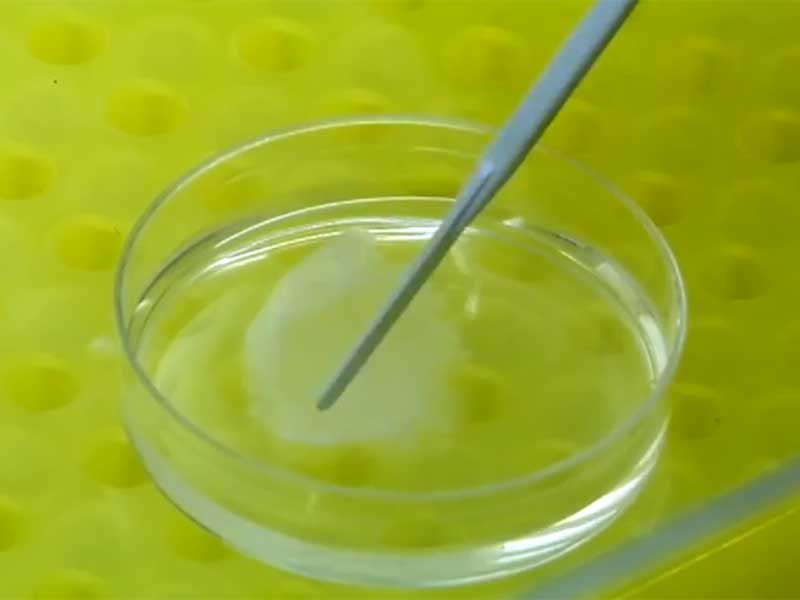
In a first, scientists have grown artificial skin using stem cells derived from the umbilical cord.
Scientists from the Tissue Engineering Research Group at the Department of Histology at the University of Granada demonstrated the ability of Wharton jelly mesenschymal stem cells to turn to oral-mucosa or skin-regeneration epithelia.
To grow the artificial skin, the researchers used, in addition to this new type of epithelia covering, a biomaterial made of fibrin and agarose, already designed and developed by the University of Granada research team.
Prior studies from the same team, already pointed to the possibility that Wharton stem cells could be turned into epithelia cells.
The current work is the confirmation of those initial studies and its application to two regeneration structures: skin and oral mucosa, increasingly needed in injuries in these parts of the body.
One of the problems major-burn victims currently have is that, in order to apply the current techniques of artificial skin, a number of weeks are needed. That is because the skin needs to be grown from parts of the patient’s healthy skin.
“Creating this new type of skin using stem cells, which can be stored in tissue banks, means that it can be used instantly when injuries are caused, and which would bring the application of artificial skin forward many weeks,” said Antonio Campos, Professor of Histology at the University of Granada and one of the authors of this study.
The study is published in the journal Stem Cells Translational Medicine.
Source: The Hindu

